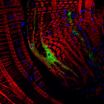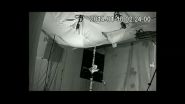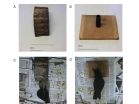(Press-News.org) Insects can transmit viral diseases to humans. Therefore, understanding how insects cope with viral infection, and what immune mechanisms are triggered, can be important to stop diseases transmission. In a study published in this week's issue of the scientific journal PLOS Pathogens*, researchers from the Instituto Gulbenkian de Ciencia (IGC; Portugal) now show that the entry route of the virus changes how the insect host responds to it. Using the fruit flies as a model of study, they discovered an immune mechanism that is specifically effective when flies are infected through feeding.
Dengue, yellow fever and chikungunya are diseases caused by viruses that are transmitted to humans via mosquitoes. However, for the transmission to occur it is necessary that the virus completes an infection cycle so that the insect becomes infected. This may take up to several days after the entry of the virus into the host, which is why it becomes so important to study viral infection in insects.
Until now two main antiviral defense mechanisms of fruit flies were known. One of these mechanisms acts by interfering with the reading of the viral genes or its genome, blocking its replication within the host; the other, is a protective mechanism conferred by bacteria living inside cells of the host. However, the studies leading to the identification of these mechanisms were conducted in a set up that did not explore different entry routes in the host. The fruit fly (Drosophila melanogaster), used as a model organism to study immunity in insects, is normally infected by injection, which might mimic the bites of mites that occur in nature. However, this mode of infection might not recapitulate well natural oral infections that occur when insects eat contaminated food, as when mosquitoes feed on blood of infected humans. Luis Teixeira's team, at the IGC, set up to investigate if there could be differences when viruses used different entry routes to infect flies.
Álvaro Gil Ferreira, investigator in Teixeira's laboratory and first author of this study, discovered that when flies were fed with food containing virus they would require an immune mechanism that had been described only to be activated for infections caused by bacteria or fungi, the so called Toll pathway. He reached this conclusion by studying mutants of flies that lacked proteins involved in this mechanism. Álvaro Gil Ferreira observed that these mutant flies survived less to viral infection than the normal flies, which indicated that those proteins of the Toll pathway were playing a role in the defense against viral infection.
Then, the research team went on to investigate if this same mechanism was also required when flies were infected through an injection in the thorax. They observed no differences between the survival of mutant flies and the normal flies after viral infection, indicating that the proteins of the Toll pathway were not playing a significant defensive role in this setup. The researchers observed that the same tissues of the fly were being infected independently of the entry route of the virus, but the infection spread faster when flies were injected with virus. The reason for this might be the fact that the injection in the thorax leads to a widespread systemic infection, since the viral particles can reach faster many tissues of the fly, through the fluid in the fly body cavity (the hemolymph, a fluid similar to the blood). When the virus enters the host through feeding, the researchers observed that in the first days of the infection the viral particles are confined to a specific tissue.
Luis Teixeira says: "This work shows how dramatically the response to viral infection changes with the way the viruses enter the organism. It also demonstrates how the mechanisms involved in the response to natural routes of infection may be more complex than the infection response with the protocol normally used in the laboratory."
Álvaro Gil Ferreira adds: "We showed that this mechanism is blocking several viruses that infect the fruit flies. By comprehending the details of the mechanisms of insects involved in the defense against viruses we may find targets to block human diseases transmitted by insects."
Knowing better the host's responses upon viral infection by different routes might also help to explain some biological phenomena observed in nature. For example, the survival of honeybees contaminated with virus seems to depend on the entry route of the virus. If contaminated through bites of mites, the honeybees die, whereas if they receive the virus from their progenitors, they can live.
INFORMATION:
This research was carried out at Instituto Gulbenkian de Ciência in collaboration with the University of Cambridge. This study was funded by Biotechnology and Biological Sciences Research Council (UK) and Fundação para a Ciência e Tecnologia (Portugal).
BOULDER - New research demonstrates for the first time that an increase in greenhouse gas concentrations thousands of years ago was a key factor in causing substantially more rainfall in two major regions of Africa. The finding provides new evidence that the current increase in greenhouse gases will have an important impact on Africa's future climate.
The study, led by the National Center for Atmospheric Research (NCAR), is being published this week in Science.
"The future impact of greenhouse gases on rainfall in Africa is a critical socioeconomic issue," said NCAR ...
WASHINGTON - Children in emergency departments can safely be treated for pain from limb injuries using intranasal ketamine, a drug more typically used for sedation, according to the results of the first randomized, controlled trial comparing intranasal analgesics in children in the emergency department. The study was published online last month in Annals of Emergency Medicine ("The PICHFORK (Pain in Children Fentanyl OR Ketamine) Trial: A Randomized Controlled Trial Comparing Intranasal Ketamine and Fentanyl for the Relief of Moderate to Severe Pain in Children with Limb ...
BUFFALO, N.Y. -- Micheal L. Dent, a University at Buffalo psychologist, listens to what is inaudible to others. And what she's hearing might one day help us better understand human hearing loss.
Dent studies ultrasonic vocalizations (USVs) in mice. These sounds are above the human ear's upper limit, but they can be recorded and played back using specialized equipment that has allowed Dent to capture an impressive repertoire that when graphically represented shows a variety of sweeps, arcs, dips and curves. The tempo and intensity of these vocalizations change, as does ...
TORONTO, Dec. 4, 2014 - Results from an ongoing survey conducted by the Centre for Addiction and Mental Health (CAMH) show that 2.2 per cent of adults --or over 230,000 people in Ontario, Canada -- seriously contemplated suicide in the last year. The 2013 edition of the CAMH Monitor, released today, included questions about suicidal ideation for the first time in the survey's history.
"Suicide is a major public health issue, and these data confirm that large numbers of Ontario adults report having suicidal thoughts," said Dr. Hayley Hamilton, CAMH scientist and co-principal ...
AMHERST, Mass. - A new study led by biologist R. Thomas Zoeller of the University of Massachusetts Amherst provides "the strongest evidence to date" that endocrine disrupting chemicals such as polychlorinated biphenyls (PCB) found in flame retardant cloth, paint, adhesives and electrical transformers, can interfere with thyroid hormone action in pregnant women and may travel across the placenta to affect the fetus.
Results appeared in an early online edition and in the December print edition of the Endocrine Society's Journal of Clinical Endocrinology & Metabolism. ...
BELLINGHAM, Washington, USA -- Those formerly silent walls can "talk" now: Researchers have demonstrated a simple optical technique by which audio information can be extracted from high-speed video recordings. The method uses an image-matching process based on vibration from sound waves, and is reported in an article appearing in the November issue of the journal Optical Engineering, published by SPIE, the international society for optics and photonics.
"One of the intriguing aspects of the paper is the ability to recover spoken words from a video of objects in the room," ...
In what is believed to be the first interview-style qualitative study of its kind among health care providers in the trenches, a team led by a Johns Hopkins geriatrician has further documented barriers to better care of older adults as they are transferred from hospital to rehabilitation center to home, and too often back again.
Using comments and concerns drawn from in-depth interviews of 18 physicians and two home health care agency administrators -- all experienced in trying to coordinate care of older adults -- the researchers created a framework for evaluating what ...
VIDEO:
A bat lands on the rewarded object in complete darkness (movie taken in IR). The movie shows that the bat has a general knowledge of the location of the object,...
Click here for more information.
In a discovery that overturns conventional wisdom about bats, researchers reporting in the Cell Press journal Current Biology on December 4 have found that Old World fruit bats--long classified as "non-echolocating"--actually do use a rudimentary form of echolocation. Perhaps ...
A new study shows that increasing sugar in the diet of male fruit flies for just 1 or 2 days before mating can cause obesity in their offspring through alterations that affect gene expression in the embryo. There is also evidence that a similar system regulates obesity susceptibility in mice and humans. The research, which is published online December 4 in the Cell Press journal Cell, provides insights into how certain metabolic traits are inherited and may help investigators determine whether they can be altered.
Research has shown that various factors that are passed ...
New Caledonian crows--well known for their impressive stick-wielding abilities--show preferences when it comes to holding their tools on the left or the right sides of their beaks, in much the same way that people are left- or right-handed. Now researchers reporting in the Cell Press journal Current Biology on December 4 suggest that those bill preferences allow each bird to keep the tip of its tool in view of the eye on the opposite side of its head. Crows aren't so much left- or right-beaked as they are left- or right-eyed.
"If you were holding a brush in your mouth ...




